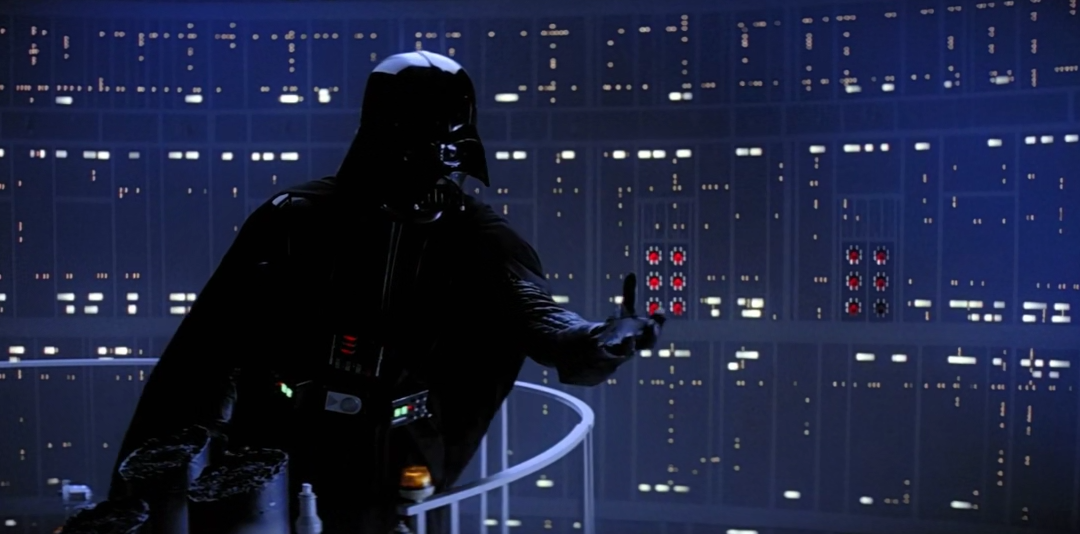You want to make life better for others. This desire is reflected in the optimism and positivity of your language – create value, love the problem, and delight the customer. But making life better requires change, and, as the adage goes, “People want change, but they don’t want to be changed.”
You are confident that the solution you created will make life better and that the change people need to make is quite small and painless, well worth the dramatic improvement you offer. Yet they resist. No amount of explaining, showing, convincing, or cajoling changes their mind. What else can you do?
To quote Darth Vader, “Give yourself to the Dark Side. It is the only way to save your friends.”
“If only you knew the power of the Dark Side…”
The Dark Side is populated by “negative” emotions like anger, fear, and frustration, which are incredibly powerful.
Consider that:
- Negative events are remembered more accurately and in greater detail than positive events
- Six positive comments are required to offset the effect of one negative comment
- 60% of people make purchases fueled by their fear of missing out (FOMO)
Unfortunately, these are also some of the first emotions experienced when confronting change.
Change requires people to let go of what they know in exchange for the promise of something better. This immediately triggers Loss Aversion, the cognitive bias in which the pain of losing is psychologically twice as powerful as the pleasure of gaining.
As a result, people won’t let go of what they know until the pain of holding on becomes unbearable. When you point out the problems and pain of the current situation, you help people understand and experience the unbearableness of the current situation.
“Anger, fear, aggression; the Dark Side of the Force are they”
Not every “negative” emotion elicits the same behavior, so carefully choose the one to tap into.
Fear motivates people to seek safety, which can be good if your solution truly offers a safer alternative. It’s a motivator used well by companies such as Volvo, SimpliSafe, and Graco. But lean on it too much, and people may feel overwhelmed and remain frozen to the status quo.
Anger motivates people to take risks, which can be good when the change requires bold decisions and dogged persistence. It can be great when it bonds people together to achieve a shared goal or protect a common value. Apple used this emotion to brilliant effect in its famous “1984” commercial announcing the launch of Macintosh. But incite too much anger, and things can get broken and not in a helpful way like Apple’s ad.
Frustration, one of the emotions that often drives aggression, is anger’s polite little sister. When people feel frustrated, they’re likely to act, persistently pursue solutions, and creatively approach and overcome obstacles. But if the change is big, feels scary, and puts their sense of self at risk, frustration isn’t powerful enough to convince people to let go of the old and embrace the new.
“If you start down the dark path, forever will it dominate your destiny.”
Yoda is incredibly wise, but he gets this one wrong. Using the Dark Side to speak to people’s “negative” emotions doesn’t doom you to a life or career of fear-mongering or inciting violence. Start here, don’t stay here.
Multiple research studies show that positive emotions, like hope and joy, are more powerful than negative ones in maintaining motivation and even enable more creative thinking and problem-solving. By speaking to both negative and positive emotions, the Dark Side and the Light, you enable change by giving people a reason to let go of the past and a future worth reaching for.
When people stop resisting and start reaching to the future you’re offering, change happens, and you realize that Yoda was right, “Luminous beings are we, not this crude matter.”

Your negative sentiment subject line pulled me in from the start, proof positive, Darth is powerful indeed!
On a serious note, I really appreciate that you emphasize the ability use both, that we have a Yes, and here and not an either/or. “sentiment fluidity’ if there is such a thing. Maybe “TM’ that.
And, I would just offer that there is a lot of robust (and conflicting) research in the Academy around all of this.
One of the folks who studied emotion was Dr. Robert Plutchik. (https://en.wikipedia.org/wiki/Robert_Plutchik)
I often like to introduce his “emotion wheel’ into my workshops so that folks can get a wider more nuanced map of the inner world landscape. (Something us Enneagram Fours have a thing or two to say about)
I like that we can access so much more of our feelings, and when healthy, express them in different measures at the right times.
it wasn’t until you wrote this piece Robin that I had seen even more of the deep wisdom of Plutchik’s work. Thanks for bringing me back to him.
Indeed, there is a lot of conflicting research (as I discovered during my Google searches). The emotion wheel is a wonderful and powerful tool, and I am so happy (but not surprised) that you use it in your work. I discovered it only a few years ago and found it to be incredibly powerful because it helped me put words to feelings and to find the right words when I couldn’t quite explain the emotions I was feeling or observing.
I’m glad I could bring you back to Dr. Plutchik, and we could have a conversation about emotions. For too long, we’ve allowed ourselves to be fooled into thinking that (1) emotions are bad and (2) good managers/executives/leaders don’t have or show them. The truth is that (1) emotions are information, (2) managers/executives/leaders are human and humans can’t turn emotions and feelings on and off with a switch. The reality is that we decide with our hearts and justify with our heads.
Thanks for the great adds Curtis!